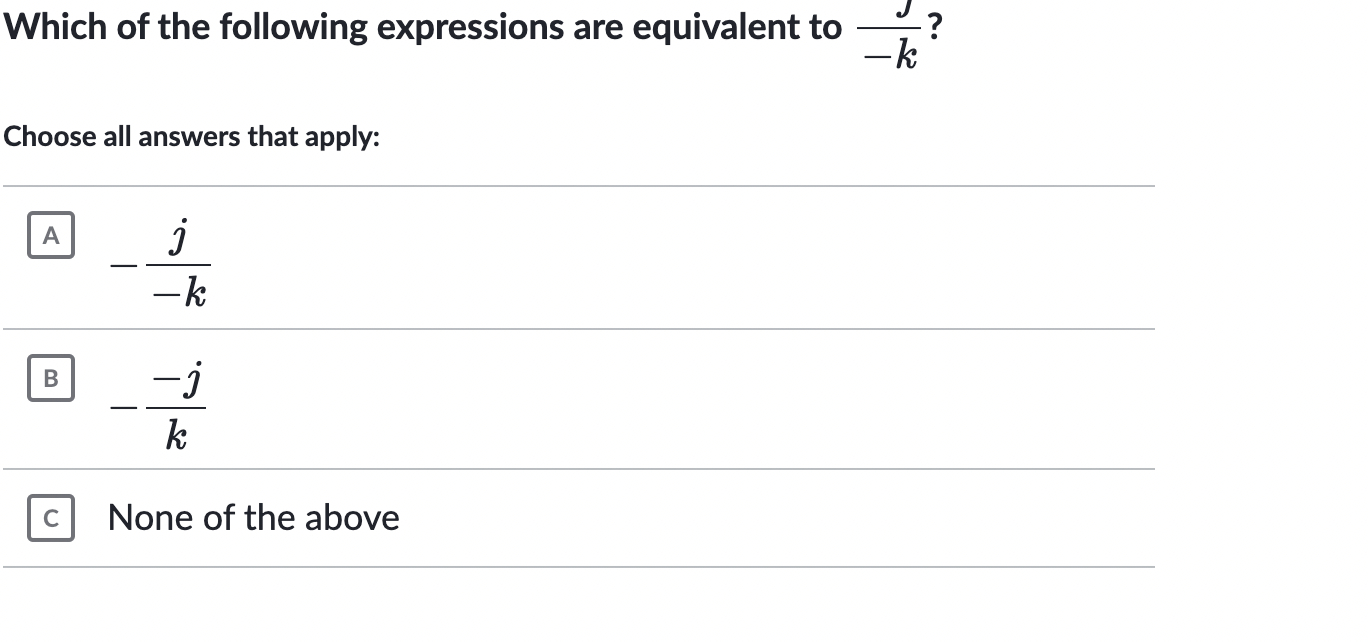Full solution
Q. Which of the following expressions are equivalent to ?Choose all answers that apply:A (B) (c) None of the above
- Check option A: Check option A: Simplify:
- Check option B: Check option B: Simplify: =
- Check option C: Check option C: None of the aboveSince both A and B are equivalent to , option C is incorrect.
More problems from Multiplication with rational exponents
QuestionGet tutor help
QuestionGet tutor help
QuestionGet tutor help
QuestionGet tutor help
QuestionGet tutor help
QuestionGet tutor help
QuestionGet tutor help
QuestionGet tutor help
QuestionGet tutor help

